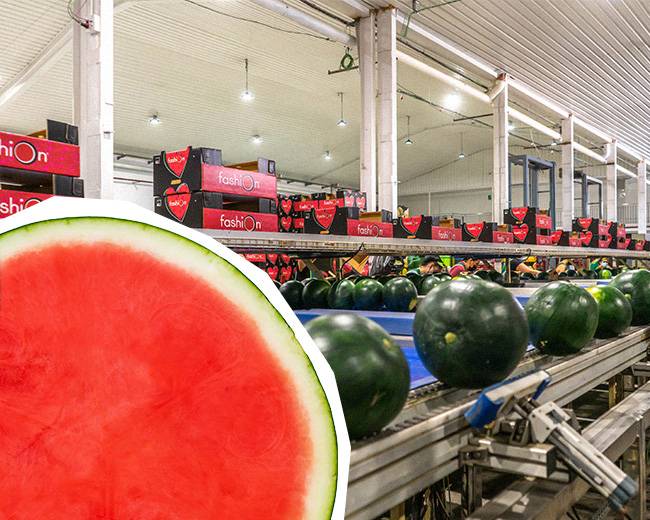Watermelon is a delicious and refreshing fruit that is usually enjoyed in summer. It is known for its juicy red flesh and some are seedless watermelons.
Why are there seedless watermelons?
In recent years, it has become increasingly common to find seedless watermelons in supermarkets and greengrocers around the world.
Watermelon, or Citrullus lanatus, is a plant of the cucurbit family believed to have originated in Africa. The fruit has been cultivated for thousands of years and has undergone genetic improvement to produce varieties with desirable characteristics, such as higher sugar content, larger size.
Other stories tell that it was in Asia, specifically Japan, where seedless watermelons were invented in the 1900s.
If we go back to that time, we can understand that it is not a transgenic product, but the union of different types of watermelons.
How do you make seedless watermelons?
The seedless watermelon, also called apirena watermelon, comes from a triploid seed (3n).
The problem is that triploid (3n) plants cannot produce offspring. Neither their ovules nor their pollen are viable, and without fertile pollen there can be no pollination or fruit set. Therefore, diploid watermelons (with seeds) must be used as pollinators. With this fertile pollen we manage to “trick” the triploid (seedless) watermelon into fruiting and producing our crop.
Triploid seed fruits are obtained by crossing female flowers of tetraploid plants (4n) with male flowers of diploid plants (2n). Tetraploid plants are obtained by chromosome duplication of normal plants (diploid, 2n), on which different products are used that produce the change from 2 chromosomes in the cell to 4 in the cell.
Pips are the seeds of the watermelon plant and are formed from the pollination of the plant’s flowers by bees or other pollinators.
However, a cross between a tetraploid watermelon, which has four chromosomes, and a watermelon with two chromosomes, produces a triploid watermelon in which there are no seeds: our Sandía Fashion.
You see, just as over the centuries we have mixed between races, so has the family tree of our product!
Another very important fact is that the seeds of tetraploid watermelons are exposed to a chemical substance called “colchicine”. It is also used in patients with uric acid problems or for very strong pains, it has been part of the creation of seedless watermelons to duplicate the chromosomes, since this type of watermelons produce only 5% of seeds in relation to the diploid ones.
Why doesn’t Sandia Fashion have pips?
One of the main reasons for the development of Seedless Sandía Fashion, in addition to all of the above, is consumer comfort and convenience.
Watermelon seeds are large and hard, which can be uncomfortable when eating the fruit, especially for those who prefer an uncomplicated eating experience.
Seedless watermelons offer an easier and cleaner option to enjoy this delicious fruit without the hassle of dealing with seeds.
Furthermore, seedless watermelons such as Fashion Watermelon are ideal for the food industry and the production of processed foods. Being seedless, seedless watermelons can be more easily cut and processed into products such as juices, purees, fruit salads and other prepared foods. This facilitates large-scale production and improves efficiency in the food industry.
It is important to note that our watermelons are not genetically modified, but are the result of the selection of plants that produce seedless fruit through traditional breeding and hybridisation methods.




